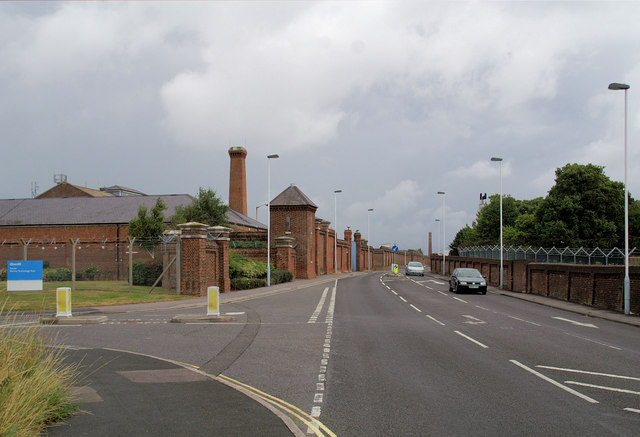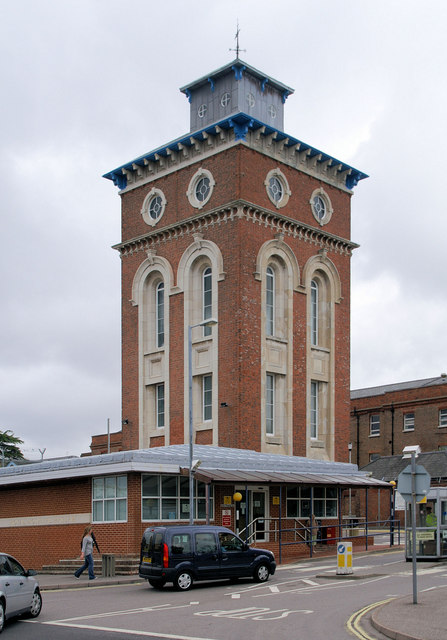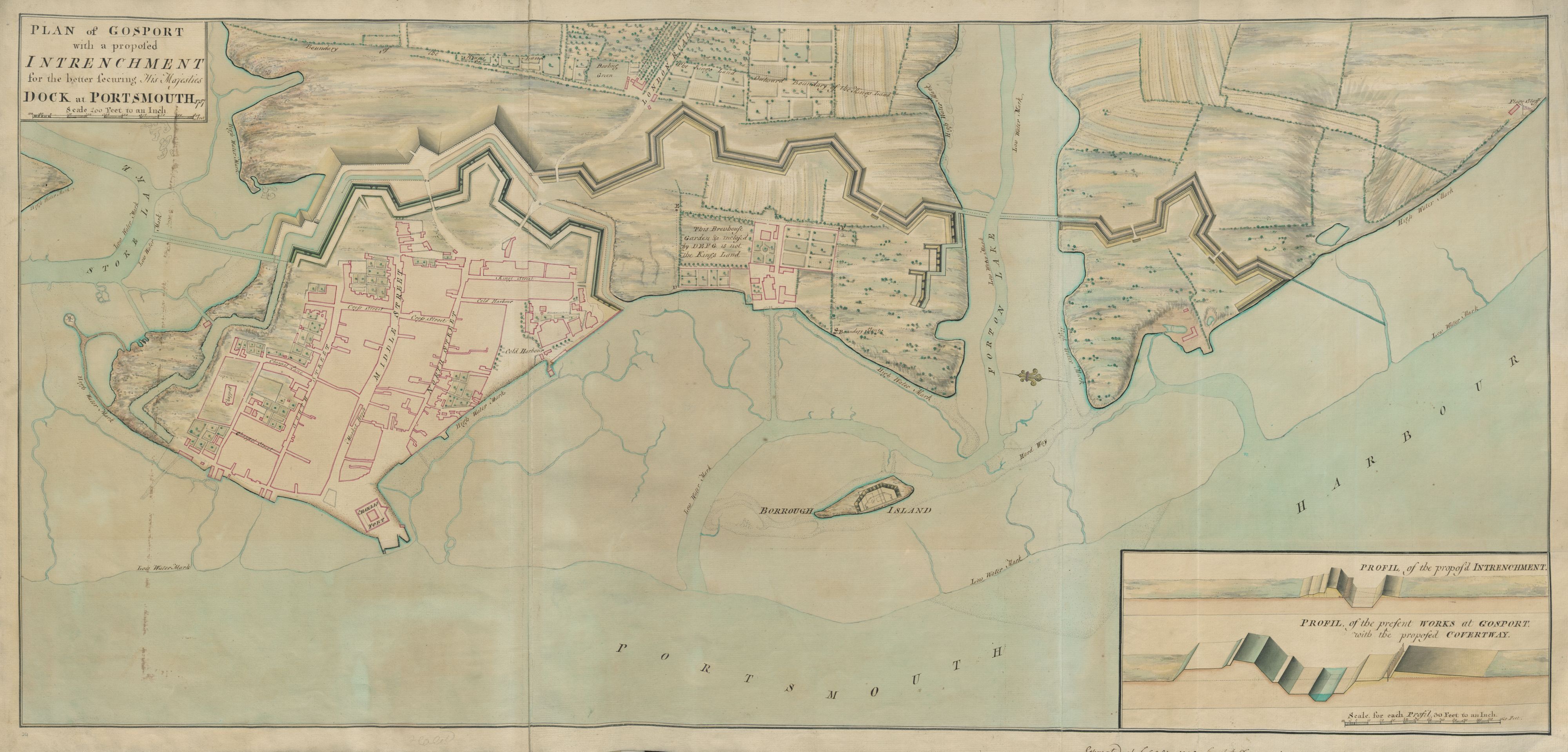|
Haslar
Haslar is on the south coast of England, at the southern tip of Alverstoke, on the Gosport peninsula, Hampshire. It takes its name from the Old English , meaning "hazel-landing place". It may have been named after a bank of hazel strewn on marshy grounds around Haslar Creek to make it passable and habitable in old times, or merely because hazel grew there. Royal Hospital Haslar The location consists principally of the former Royal Hospital Haslar site, now luxury housing. The site for Haslar hospital was bought in 1745; before that the land was Haslar Farm (though spelt Hasler Farm at the time) within the liberty of Alverstoke. The site was a slightly unusual location for a hospital because it was surrounded by the Gosport Creek, with no readily available access: such an area was chosen to prevent press-ganged sailors from absconding. Royal Naval Cemetery It was primarily to serve the hospital that the Haslar Royal Naval Cemetery was laid out. It contains (June 2014) Commonw ... [...More Info...] [...Related Items...] OR: [Wikipedia] [Google] [Baidu] |
Royal Hospital Haslar
The Royal Hospital Haslar in Gosport, Hampshire, was one of several hospitals serving the local area. It was converted into retirement flats between 2018 and 2020. The hospital itself is a Grade II listed building. History Formation and operation The Admiralty acquired the site selected for the hospital, Haslar Farm, whose name came from Anglo-Saxon ''Hæsel-ōra'' ( en, Hazel Bank), in 1745. The building was designed by Theodore Jacobsen and construction of the main building was completed in on 23 October 1753. On completion it was the largest brick building in Europe. Building works cost more than £100,000, nearly double the cost of the Admiralty headquarters in London. In its early years it was known as the Royal Hospital Haslar. Patients usually arrived by boat (it was not until 1795 that a bridge was built over Haslar Creek, providing a direct link to Gosport). Built on a peninsula, the guard towers, high brick walls, bars and railings throughout the site were all des ... [...More Info...] [...Related Items...] OR: [Wikipedia] [Google] [Baidu] |
Gosport
Gosport ( ) is a town and non-metropolitan borough on the south coast of Hampshire, South East England. At the 2011 Census, its population was 82,662. Gosport is situated on a peninsula on the western side of Portsmouth Harbour, opposite the city of Portsmouth, to which it is linked by the Gosport Ferry. Gosport lies south-east of Fareham, to which it is linked by a Bus Rapid Transit route and the A32. Until the last quarter of the 20th century, Gosport was a major naval town associated with the defence and supply infrastructure of His Majesty's Naval Base (HMNB) Portsmouth. As such over the years extensive fortifications were created. Gosport is still home to and a Naval Armament Supply Facility, as well as a Helicopter Repair base. The Town area of the Borough, including Newtown, consists of the town centre, Stoke Road shopping area, Walpole Park, Royal Clarence Yard and three modern marinas: Royal Clarence, Gosport Marina and Haslar Marina. As part of the ''Renai ... [...More Info...] [...Related Items...] OR: [Wikipedia] [Google] [Baidu] |
Haslar Immigration Removal Centre
Haslar Immigration Removal Centre (formerly known as Haslar Prison) was an immigration detention centre, located in Haslar (near Gosport), Hampshire, England. The centre was operated by Her Majesty's Prison Service. The centre closed in 2016 with the Ministry of Justice planning to retain the site for use as a prison. History The establishment was previously known as HM Detention Centre Haslar (from 1962-1989) housing young male offenders. However, from 1989 Haslar started exclusively holding foreign national prisoners. In February 2002 Haslar was redesignated as a Removal Centre, and began operating under Detention Centre rules. Haslar held those detained by UK Visas and Immigration during documentation procedures and during the process of removal or deportation. Only detainees awaiting deportation or appealing against their immigration status were held at Haslar. The vast majority of the population were ex-foreign national A foreign national is any person (including an or ... [...More Info...] [...Related Items...] OR: [Wikipedia] [Google] [Baidu] |
Alverstoke
Alverstoke is a small settlement which forms part of the borough of Gosport, on the south coast of Hampshire, England. It stretches east–west from Fort Blockhouse, Haslar to Browndown Battery, and is centred east of the shore of Stokes Bay and near the head of a creek which extends a mile westward from Portsmouth Harbour. Residents of Alverstoke have at times in the 20th century been called 'The Alverstocracy' by some residents of Gosport, in a tongue-in-cheek fashion, due to higher house prices and a perceived higher social status of the area. History The name 'Alverstoke' is most likely to be derived from a corruption of the name Alwara – an Anglo-Saxon Lady of the Manor – and Stoke, a settlement on the area of Alverstoke. Alverstoke is mentioned in the Domesday Book as Alwarestock. Official Crown and Manorial records for the village refer to "The liberty of Alverstoke with Gosport", although the name has clearly evolved over the years: [...More Info...] [...Related Items...] OR: [Wikipedia] [Google] [Baidu] |
Chick Henderson (singer)
Chick Henderson (22 November 1912 – 24 June 1944) was an England, English singer who achieved popularity and acclaim as a prolific recording artist and performer of the British dance band era in the late 1930s and early 1940s. Chick Henderson was born Henderson Rowntree in Hartlepool, England. He attended Galleys Field School on Hartlepool Headland Estate, Headland. "Chick" was nothing more than his mother's nickname for her smallest son. His first recordings were made for Harry Leader in June 1935. The following year he began singing for Joe Loss' popular radio orchestra. He stayed with Loss for five years and became a great favourite among young women who formed his core audience. A tall, handsome man with a rich, strong vocal delivery, he appeared on postcards and magazine covers. In his short life, Chick Henderson made over 250 recordings but, as with many big band singers, his name did not appear on the record label—only the orchestra was listed. In July 1939, h ... [...More Info...] [...Related Items...] OR: [Wikipedia] [Google] [Baidu] |
HMS L55
HMS ''L55'' was a British L class submarine built by Fairfield Shipbuilding and Engineering Company, Govan, Clyde. She was laid down on 21 September 1917 and was commissioned on 19 December 1918. In 1919 ''L55'' was sunk in the Baltic Sea by Bolshevik vessels while serving as part of the Allied intervention in the Russian Civil War. The submarine was raised in 1928 and repaired by the Soviets. After being used for training, she finally was scrapped in the 1950s. British service HMS ''L55'' was based at Tallinn, Estonia as part of the Baltic Battle Squadron which was supporting the Baltic states fighting for independence. On 9 June 1919 in Caporsky Bay in the Gulf of Finland ''L55'' attacked two 1,260-ton Bolshevik ''Orfey''-class minelayer-destroyers, and . HMS ''L55'' missed her targets and was forced into a British-laid minefield. Soviet sources stated ''Azard'' sank her by gunfire. If she was sunk by gunfire, ''L55'' was the only British submarine sunk by hostile Soviet ... [...More Info...] [...Related Items...] OR: [Wikipedia] [Google] [Baidu] |
Royal Army Ordnance Corps
The Royal Army Ordnance Corps (RAOC) was a corps of the British Army. At its renaming as a Royal Corps in 1918 it was both a supply and repair corps. In the supply area it had responsibility for weapons, armoured vehicles and other military equipment, ammunition and clothing and certain minor functions such as laundry, mobile baths and photography. The RAOC was also responsible for a major element of the repair of Army equipment. In 1942 the latter function was transferred to the Royal Electrical and Mechanical Engineers (REME) and the vehicle storage and spares responsibilities of the Royal Army Service Corps were in turn passed over to the RAOC. The RAOC retained repair responsibilities for ammunition, clothing and certain ranges of general stores. In 1964 the McLeod Reorganisation of Army Logistics resulted in the RAOC absorbing petroleum, rations and accommodation stores functions from the Royal Army Service Corps as well as the Army Fire Service, barrack services, sponso ... [...More Info...] [...Related Items...] OR: [Wikipedia] [Google] [Baidu] |
Gunboats
A gunboat is a naval watercraft designed for the express purpose of carrying one or more guns to bombard coastal targets, as opposed to those military craft designed for naval warfare, or for ferrying troops or supplies. History Pre-steam era In the age of sail, a gunboat was usually a small undecked vessel carrying a single smoothbore cannon in the bow, or just two or three such cannons. A gunboat could carry one or two masts or be oar-powered only, but the single-masted version of about length was most typical. Some types of gunboats carried two cannons, or else mounted a number of swivel guns on the railings. The small gunboat had advantages: if it only carried a single cannon, the boat could manoeuvre in shallow or restricted areas – such as rivers or lakes – where larger ships could sail only with difficulty. The gun that such boats carried could be quite heavy; a 32-pounder for instance. As such boats were cheap and quick to build, naval forces favoured swarm ... [...More Info...] [...Related Items...] OR: [Wikipedia] [Google] [Baidu] |
St George Barracks, Gosport
St George Barracks (not ''St George's Barracks'') was a military installation at Gosport, Hampshire. In addition to the guard house, barrack blocks, the sergeant's mess and the gymnasium all survive and are Grade II listed buildings. History The barracks were designed to accommodate an infantry regiment in transit for operations overseas and were built between 1856 and 1859. Initially named "New Barracks", the barracks were built in the colonial style with flat roofs and verandas. The site was first occupied by the 86th (Royal County Down) Regiment of Foot in August 1859. A gymnasium was added in 1868. During the Second World War the barracks were used by the Royal Navy as a training facility for new recruits, initially under the name of HMS ''Victory IV'' and then as HMS ''St George''. After the War the barracks were occupied by the 3rd Royal Tank Regiment and were renamed St George Barracks. The barracks were handed over to the 20 Landing Craft Tank Support Regiment, Royal Corps ... [...More Info...] [...Related Items...] OR: [Wikipedia] [Google] [Baidu] |




